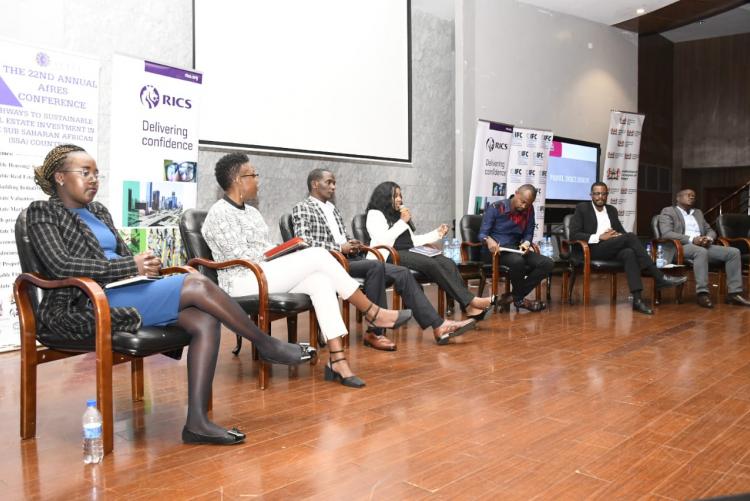RICS Sustainability & Decarbonisation Panel Discussion
Four faculty members from the Department of Architecture took part in a lively panel discussion during the 22nd AFRES 2023 (African Real Estate Society) conference discussing the Sustainability and Decarbonisation in the built environment in Africa held at the Chandaria Hall, University Towers, Main Campus on 15th September 2023.
The Team, led by the chairman of the Department, Arch. Musau Kimeu together with Dr. Linda Nkatha, Arch. Christine Nzilani and Arch. Peninah Mutonga took stock of efforts in the construction industry, which accounts for approximately 38% of the annual global CO2 emissions.
Indeed, Africa contributes the least carbon dioxide and GHG (greenhouse gases) but
she is in fact urbanizing exponentially therefore posing both Challenges and
Opportunities for Climate Action.
Architecture, like other industries, is based on intense production, manufacturing and
transportation of materials. Architecture has immense consumption of non-renewable
resources and subsequent Colossal emissions of greenhouse gases from the high
embodied energy of these materials and Waste production. Construction is directly
linked to:
- Deforestation.
- Depletion of fossil fuel
- Decrease in fresh water reserves
- Emissions of Greenhouse gases and CO2 through Consumption of non-renewable resources
- Long distance transportation of raw materials and associated emissions
Some of the ways floated for sustainability were both the passive design approach
specific to the climatic zone to reduce energy demand e.g high thermal mass, sun-
shading, custom window/wall ratio, natural lighting and ventilation etc and active
features/ add-ons to ensure efficient use of resources e.g rain water harvesting, bio-
digesters for waste management etc The choice of construction materials is also key as
local materials are preferred since they often have the least embodied energy.
A present outlook into future Efficient use of our limited resources is through adoption of
BIM(Building Information modelling) to predict building performance especially in energy
consumption. While occupied, monitoring through use of BMS (Building Management
System) for checking consumption in energy (in lighting, heating and cooling/ HVAC),
water, security systems and occupancy sensors are key attempts at reducing energy
demand and subsequent emissions.
Some of the attempts at decarbonising the built environment in Kenya are in research
and advocacy, training of sustainable design experts and in policy formulation-
particularly the recent adoption of the Safari Green Building Index by local planning
authorities. Kenya ought to promote investments supporting sustainable/Green
buildings, and Government must set the pace by building Green!
Among the case studies for green buildings cited during the discussion were the Learning Resource Centre(LRC), Auditorium and the Library design at The Catholic University of Eastern Africa(CUEA) designed by Arch. Musau Kimeu
Click this link to access the photo Gallery
- Log in to post comments

